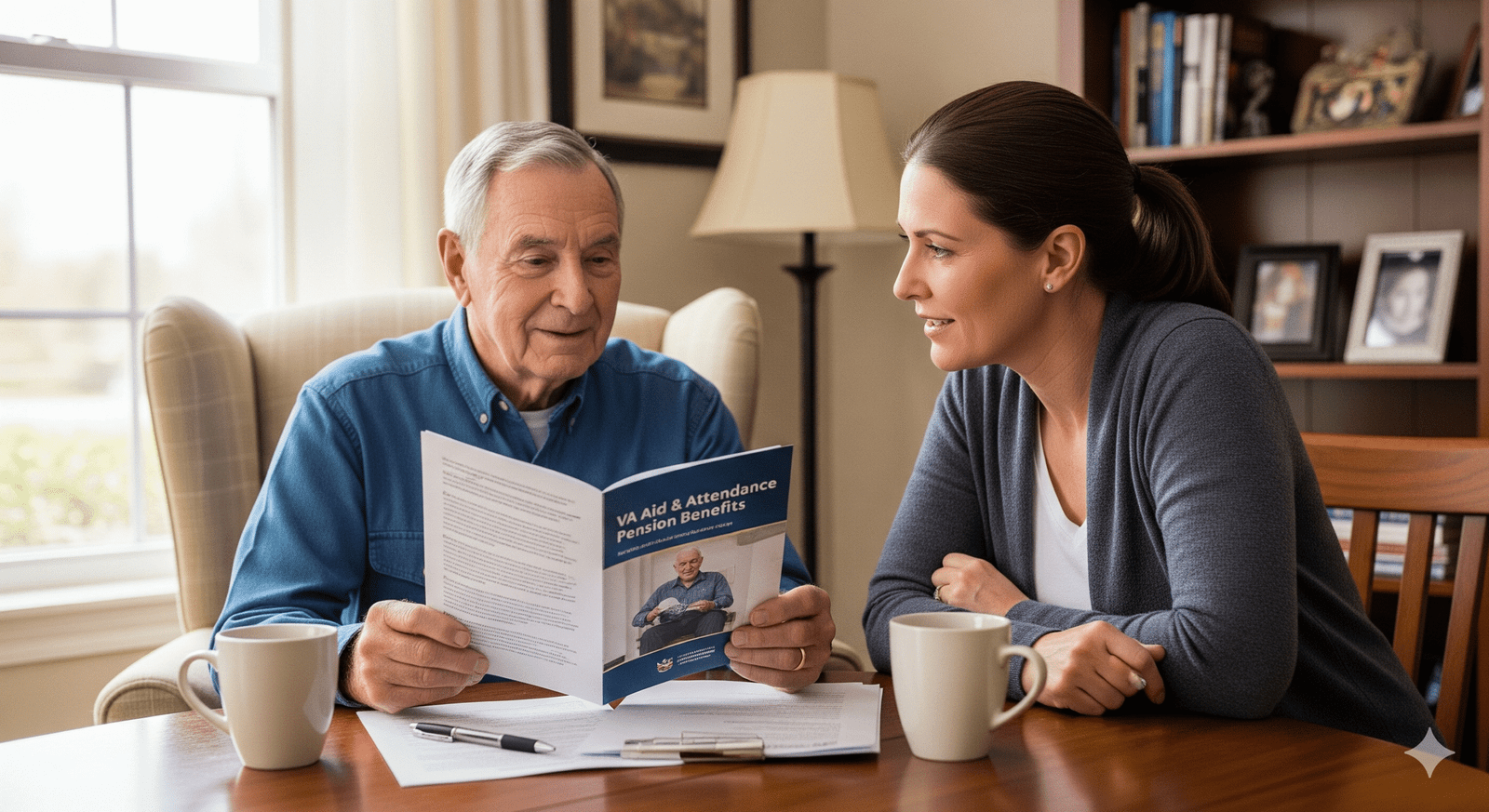Veterans and surviving spouses can often qualify for more than just the basic VA pension. The Aid & Attendance (A&A) Pension is a valuable, tax‑free monthly boost available to those needing help with everyday activities, living in a nursing home, or being homebound. In this guide, we’ll walk you through eligibility, benefit amounts, how they’re calculated, and how to apply—with clear details to help make the process easier.
1. What Is the VA Aid & Attendance Pension?
The Aid & Attendance benefit is an enhanced monthly pension. It is added on top of the basic VA Pension and is designed to support Veterans or surviving spouses who need assistance with daily living or are experiencing serious health or mobility limitations (Medicaid Planning Assistance).
2. Who Qualifies? Eligibility Criteria
Basic Pension Eligibility
First, the applicant must be eligible for the standard Veterans or Survivor Pension. Key requirements include:
- Honorable discharge and wartime active duty (minimum 90 days, including at least one day during a designated wartime period) (VeteranAid).
- Meet age or disability prerequisites:
- 65+ years old OR
- Totally and permanently disabled, OR
- Institutionalized for long‑term care, OR
- Receiving SSDI or SSI (Veterans Affairs, Veterans Aid Benefit).
- Income and net worth below VA-set limits: As of December 1, 2024 – November 30, 2025, the net worth cap is $159,240 (Hill & Ponton, P.A.).
Aid & Attendance—Medical Criteria
Applicants must meet at least one of the following:
- Need assistance with daily living activities (bathing, dressing, feeding, etc.) (Veterans Affairs).
- Be bedridden for most of the day due to medical conditions (Veterans Affairs, Hill & Ponton, P.A.).
- Reside in a nursing home due to mental or physical incapacity (Veterans Affairs).
- Have severe vision loss (corrected visual acuity of 5/200 or less in both eyes, or significant visual field contraction) (Veterans Affairs).
Note: You can’t receive both Aid & Attendance and Housebound benefits simultaneously (Veterans Affairs).
3. How Much Extra Can You Get?
A&A Pension Amounts (2025 MAPR)
Maximum Annual Pension Rate (MAPR) for A&A—effective Dec 1, 2024 to Nov 30, 2025:
- Single Veteran (no dependents): $28,300/year (~$2,358/month)
- Married Veteran (or with dependent): $33,548/year (~$2,795/month)
- Two Veterans (both qualify): $44,886/year (~$3,740/month) (Eldercare Resource Planning).
Example: If a single veteran earns $12,000/year, their A&A pension would be:
- MAPR: $28,300
- Income: $12,000
- Annual difference: $16,300 → $1,358.33/month (Mesothelioma Guide).
These payments are tax-free and flexible—usable for caregiving, home modifications, assisted living, or nursing care (Medicaid Planning Assistance).
4. How the Pension Is Calculated
- Calculate annual gross household income (veteran, spouse, dependents).
- Deduct unreimbursed medical expenses (prescriptions, caregiver services, etc.) above 5% of MAPR (Veterans Aid Benefit).
- Subtract these medical deductions from income to get countable income.
- Subtract countable income from MAPR—difference is annual pension.
- Divide by 12 and drop any cents to get monthly amount (Veterans Aid Benefit).
5. Step-by-Step: Applying for Aid & Attendance
- Gather documentation, including:
- DD-214 or discharge papers
- Proof of income, assets, and medical expenses
- Physician-completed VA Form 21‑2680
- If in nursing home: VA Form 21‑0779 (Hill & Ponton, P.A., Veterans Affairs).
- Submit your application:
- By mail to Pension Intake Center in Janesville, WI
- Or in person at your local VA regional office (Veterans Affairs).
- Consider help from a VA-accredited advocate or attorney, especially if your situation is complex (Hill & Ponton, P.A.).
- Be prepared for wait times—approval can take 9 to 12 months, but if approved retroactively, you’ll receive back pay from the filing date (Hill & Ponton, P.A.).
6. FAQ
Q: Can surviving spouses receive A&A?
Yes—qualified surviving spouses can receive it as an enhancement to the Survivors Pension, provided they meet similar medical and financial requirements (Hill & Ponton, P.A.).
Q: Are these benefits taxable?
No. Both the base pension and A&A are tax‑free.
Q: Can A&A affect Medicaid eligibility?
Not directly—but the basic pension may count as income for Medicaid. The A&A portion typically does not, but the interaction varies by state (Medicaid Planning Assistance).
The VA Aid & Attendance Pension offers meaningful, tax-free monthly support for Veterans and surviving spouses who need help with daily living or long-term care. Though applying takes preparation and patience, the returns—financial, practical, and emotional—can be life-changing. If you or a loved one may qualify, don’t wait—get the documents together and seek help to apply today.

